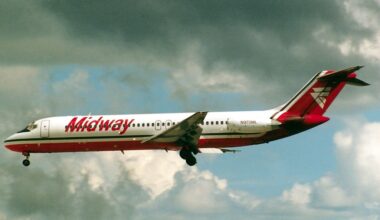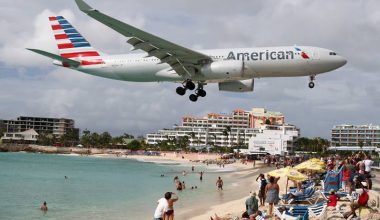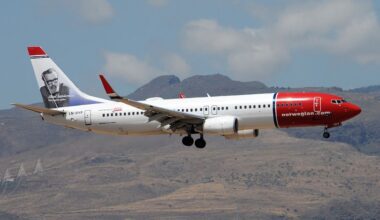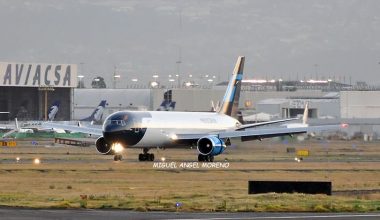Flying solo can be really troublesome if you don’t know the airport procedures properly, especially the international airport procedures can be both stressful and elongated. Although traveling solo is an adventurous journey filled with a different excitement, it can leave quite a bad taste if becomes tiring and exhausting due to unfamiliarity with the rules, regulations, and proper synchronization of steps.
So, in order to master a flying solo experience, we have prepared a list of stuff you should be careful about, from planning the perfect trip to the arrival at your destination.

Planning
The lack of proper planning can put travelers in really difficult circumstances, especially when flying solo. If the hotel pick-up and the flight time are not perfectly synched, it can get complicated to get a quick connection with the hosts in a foreign land, not knowing where to go or what can cost the travelers a lot on the airport taxi. When flying solo sorting out the flights and pick-up by the hotel is the most significant, so noting down the flight details after booking tickets for the pick-up is well-balanced synch.
After getting the flight details, the travelers should provide their contact details and flight details to the hotel of their choice for convenient pick-ups. The hotels generally tell the location where their transportations are docked and even hold name signs to make it easily noticeable for the travelers. The hotel coordination with the guest flight arrival is impeccable; however, noting the number of hotels to make calls if any delays occur so you will stay relaxed with a proper relay of information even in a completely new location.
Book Your Seat Early
Although many airlines charge extra fees for pre-booking seats, the extra payment while flying solo can help you get comfortable, relaxed seatings. It may not be much of an issue if you’re planning a short-haul trip that doesn’t last longer than 3-4 hours; however, the wrong seating can completely damper the holiday mood you are carrying with you during long-haul flights. Imagine getting assigned a middle seat between two big people during 8-12 hours long-haul flights; the constant space invasion may turn the happy mood into a sour memory. It might be a different story when you are flying with your friends and family but, for long trips when flying solo, it’s best to pick your seat, windows, or aisle, whatever makes you comfortable. Or, you can even ask for details about seating configuration during the booking process, as some airlines assign the windows seats for solo travelers; it is even cost-saving if you have a similar preference.
Master Check-in Process
The general rule in most airlines is that passengers should arrive 3 hours before their scheduled flight for long-haul trips. With the modernization of the check-in procedure, now the passengers have options to whether check-in at the airline’s desk or online; the online check-in procedure practices its own set of time span ranging from 24-hours to 45 minutes before flight, depending on the nature of travel. The check-in process confirms the booking for the flights, so when flying solo, make sure you follow all the necessary protocols for the flights, from canning your passport, receiving your boarding passes and baggage claim card, weighing the bags, and handover over any checked luggage. The check-in process covers these three procedures; if you are careful about these, then it will make it as easy as a walk in the park. Also, pay proper attention to securely putting the boarding passes and baggage claim card; otherwise, it might get burdensome to get on the flight or collect your belongings.
Further, if you need to change planes and have booked flights on separate tickets, you will need to get your next boarding pass from the airline’s transfer desk at the airport and even collect your checked luggage.
At Security Screening
Security screenings are a mandatory procedure followed in every airport to ensure travelers are not carrying dangerous or prohibited items to the flight. The passenger’s items are placed in the trays and checked through the x-ray machines to ensure everything is in order. The items you can carry on your flights may differ from country to country, so it will be best if you research the custom laws for airports and transit airports of your route. When flying solo, especially if it’s your first time, you might get really confused to prep for the security screening; however, it doesn’t take long if you are well prepared for it,.
Just make sure to remove jackets, belts, and metal items from your baggage that will go through the security offers, determining if you will be allowed to carry those on flights or not. Also, make sure to empty your pockets, take out your wallet, cards, or any documents you are keeping in your pocket, and make sure the drinking water bottle you are carrying is empty or else will be confiscated by the security officers at the screening department. Place all your important documents in your bags and your laptops, including other gadgets, in a separate tray. Then, you will be processed through the metal detector, and the security officers will comply with random pat-downs, body x-rays, and bag searches.
Also Read: British Aviation Industry Faces Uncertainty
If you follow the steps mentioned above clearly, you won’t be liable for any kind of distress while going through the security screening at the airport.
Prep For The Customs
After the security screening, prepare yourself for the customer and border protection process; the officers at the customs check the travelers for things like if the right documents to be in the country or not, or if they are legally allowed to be there or not. You might be used to this if you are an experienced traveler; if you are a newbie fly solo, the security officers at the customs will identify you and review your documents. It is a completely normal mandatory process at the airports before boarding the flight so try to be calm and answer them if they ask any kind of questions or present specific documents. You should prepare these three travel documents to go through a quick custom security inspection:
- Passport
- Current Boarding Pass
- Other travel documents(if necessary)
The custom screening procedures may also be limited to electronic processes depending on country of origin or travel destination. However, be sure to answer the question by the customer officers honestly, they are well-trained to detect suspicious activities, so if you got any prank, you might land yourself in the holding room.
Locate Gate and Terminal
Normally, the terminal gate of the flight destination is printed on the boarding passes; however, the airport that operates with many carriers may have to adjust the gate numbers depending on the needs. So, in some cases, the gate number and terminal can change. Thus, it is essential to make sure you are in the queue for the right flight. The flight departure screens are frequently updated with any kind of changes, so keep tracking the details on your flight, so you don’t end up waiting in a long queue to finally find out is not the right boarding gate.
Even when flying solo, you don’t have to worry about navigating to the right gates; the signs on the airport will provide directions with specific directions to the gates and terminal. You can wander around for some snacks and coffee if the flight is scheduled for a little late but make no mistake, make sure you find your gate first and confirm it; also, keep your eyes on the flight monitor and check it regularly. The allocated boarding time is when the passengers need to be at their respective gates, not the departure time. If you have any queries or need help with direction, you can ask the airport staff.
Don’t Fall Asleep
The scheduled flights may not also be timely as expected; the weather conditions or delays can change the flight timetable. It’s natural if you feel tired because of long layovers and jetlag, you might want to take a short nap at the airport before it’s time for your flight. However, when flying solo, you need to understand that there are no friends with you at the airport, and you are responsible for the safety and care of your carry-ons. As the single sleeping passengers at the airport are the target for having their stuff stolen, you have to make sure that you don’t doze off, leaving your stuff vulnerable. Also, the long naps can risk you missing the flights; you might not be able to hear your name announcement if you are in a deep sleep, so don’t give in to the temptation, especially when you are flying solo.
Make sure to grab a cup of coffee that will help you stay awake even if you are tired to your bones; once you settle in your designated seat, enjoy your well-deserved nap.
Connecting Flights
In most long-haul travels, the airline’s practice transition stops in the middle of the flights; however, in some cases, the travelers may need to change flights midway, proceeding with another flight of the same carrier or a completely new one. The travelers may receive a minimum of 90 minutes of layover time if the schedules are busy. The misdirection and delays are often faced during transitions flights; it can make it even more confusing when flying solo. Well, if you get the hang of it, it isn’t more than switching taxis; you just simply need to follow the ‘Flight Connection’ signs and process through the security screening again towards the respective gate.
Also, if you don’t have a boarding pass for your next flight, make sure to collect it from the airline transfer desk; you may even be required to recollect checked luggage depending on your airline/ticketing. The transit visas may be necessary to board the transit flights, and depending on the airport; you may have to proceed through the passport control office. Just make sure to check the flight screen for any changes or updates and research the boarding procedures of the country as the law and regulations of transit flights may differ depending on the country.
Some Extra Tips When Flying Solo
- Be internet safe and use VPN; when accessing the public WiFi at the airports, it’s best to use VPN services to protect your private data from getting stolen.
- Pack food and water; there is always a decent chance of your flight getting delayed, so make sure you have packed enough fluid, and healthy snacks as the cafeteria in the airports is pretty costly.
- Bring your own entertainment; all the airlines necessarily don’t provide the entertainment kits as amenities, so escape the 12hours boredom carrying your own equipment sets.
- Dress comfortably; there might be a dramatic change in temperature depending on your travel destination; you can pile a few layers on your lap that will save some luggage space.
- Screenshot your accommodation address and always carry a pen; you need to fill the form with your accommodation destination in the custom forms so you can easily fill in the required criteria. Also, carrying a pen will save your time looking around for a pen to fill the necessary document at the airport.








